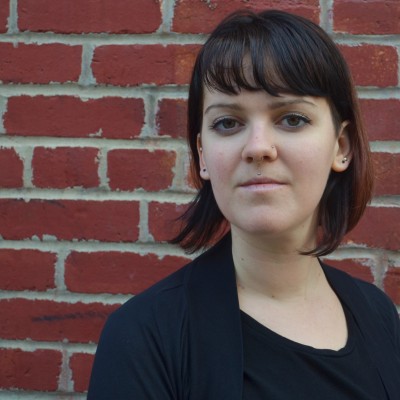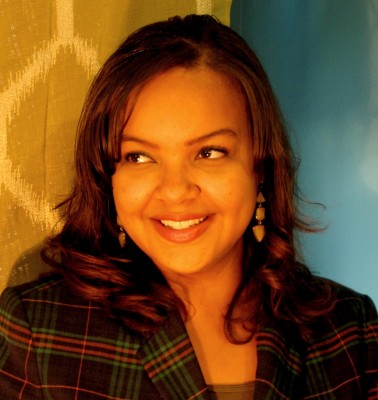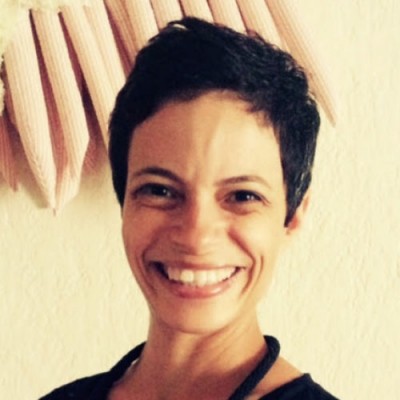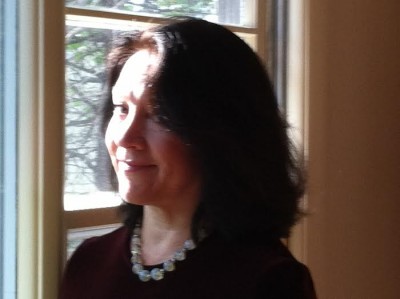Eames Armstrong hates calling herself a curator. And she may have a point. With everyone from DJs to fashionistas using the term to denote their picks and misses, it can mean almost anything to anybody. She recalls the moment she heard people say they “curate food” when grocery shopping.

Armstrong is not alone; curator Laura Roulet isn’t crazy about the moniker either. With 20-plus years of curating exhibitions, she prefers calling herself a “cultural producer.”
And budding curator KayLeigh Bryant-Greenwell gets down to basics. “I organize shows,” she said.
No matter the titles they choose to use, the business of training curators is taken seriously at VisArts in Rockville, where curating is emphatically not about nailing pictures on a stark white wall. For the past two years, the gallery has produced the VisArts Emerging Curator Program, funded by the Windgate Charitable Foundation, that brings together emerging curators with seasoned professionals.
Jacqueline Maria Milad, who mentored Armstrong for the 2016 season, called the VisArts partnership a “unique program. We had a working budget to commission new art from the artists. They were paid what they deserve, which is not often the reality.”

Both Milad and Roulet, who was last year’s curator, evaluated applications to choose their mentees. They met bi-weekly, and ultimately, each curator and her mentee produced their own individual exhibition. With this hands-on approach, emerging curators are able to learn while their mentors create a show, and also put on their own public display.
From the start, the mentees are involved with every stage of the process: honing in on a theme, the mechanics of creating the show, the excitement of opening night and finally, dismantling the exhibition after its run. And while it may seem intellectually glamorous to search for new talent and offer instructive critiques, Armstrong discovered the process also includes “painting, cleaning floors and writing press releases.”
Bryant-Greenwell recalled learning she had a budget of $10,000 and initially thinking it was a windfall. She soon learned how quickly the money is spent when working with six artists. Nevertheless, she was grateful to learn from her mentor all about budgeting, and first and foremost, “paying taxes.”

The process of producing an exhibition can start with profiling a specific artist or examining a political or cultural event. Sometimes, museum or educational institutional bigwigs might mandate the theme.
As the chief curator at the Delaware Center for the Contemporary Arts in Wilmington, Milard recalled having to select work from patrons of the center. Trolling through the slides, she wasn’t exactly thrilled. However, once the chosen pieces were carefully placed to create a cohesive exhibition, she told her colleagues, “It’s good.” At that point, she realized that sometimes how and where art is placed and framed can elevate a ho-hum show into something much better.
In the best scenarios, Milard prefers beginning her curatorial process by selecting a specific artist. She does research, visits the artist’s studio and slowly begins building an exhibition. “I hem and haw between how I want to expose the audience to new ideas,” she said. When considering her recent exhibition at VisArts, she noted that there is great experimental dance in the D.C area and decided to develop an exhibit investigating dance’s relationship with performance and visual art. Mentee Armstrong’s exhibit will take place in September.

Curators also must be tough critics. When working with an artist, it is important to consider the artist’s cultural and personal limitations. “Artists doing work surrounding racial issues should be responding from a place of authenticity according to their race,” Roulet said. Armstrong recently noticed an uptick in artists commenting on gentrification when the social issue does not negatively affect them.
It’s also important for curators to insist that artists familiarize themselves with contemporary art history, Roulet said. Without this insight, she has seen young feminist artists replicating work by the likes of 1970s performance artist Carolee Schneemann.
The actual path to take to become a curator is debatable. It is clear a strong art history background is critical for curators. Contemporary curators don’t need a doctorate, but it is necessary if one hopes to do scholarly research, on say, the Renaissance. Roulet is also concerned when a visual artist takes on the mantle of curator. “They might want to put their friends or their own work in a show” Roulet says. She believes it is best to take a stand and be one or the other.
Armstrong feels quite differently. Trained in painting and art history, she is herself as both artist and curator. Before mentoring with Milard, she had already participated and organized numerous performance art productions in D.C. “I am hooked on performance art,” she said. “When I first came to D.C., I didn’t see any performance art so I started up 2013 Supernova Performance Art Festival (in Roslyn, Va.) Interdisciplinary art is now the norm.” She believes artists are taking a much more hands-on approach to making and exhibiting their work.
Roulet understands the historical precedent, recalling the numerous gallery storefronts popping up in New York City’s East Village during the 1980s. Nevertheless, she sees it as a conflict of interest. “Curators need to have a critical distance,” she said.
On a daily basis, the curators are seeing how the Internet has changed how artwork is seen. Whether it’s watching a video of the art on the museum’s website, posting images on Instagram or standing smack dab in the middle of the gallery, how art should be seen is debated.
While the curators concurred that snapping pictures at a museum can be a distraction to the other patrons, Bryant-Greenwell sees it as “a natural part of the of the experience.” She would not work with an artist who wouldn’t permit his or her work on the Internet. While she understands that artists want to control how their work is viewed, she believes the Internet opens more possibilities for the artist. “At least it gets the work out to more people,” Armstrong said.
That may be true but Roulet contended that cellphones and the like are incapable of showing the power of the artwork. Its size, texture and overall effect cannot be even slightly duplicated when it is shown on a two-inch screen.
The curators all agreed that getting people physically into the art space is mandatory. And once there, Bryant-Greenwell wants the work to be challenging. “Many people come to shows and make the mistakes of asking themselves ‘would I want this in my house?’” Instead, they need to embrace the moment and see how the work affects them in this place and time.
And it’s possible at VisArts. “It is a shining beacon in Montgomery County,” Bryant-Greenwell said.
VisArts, 155 Gibbs St., Rockville is open Wednesday, Thursday, Saturday and Sunday from noon to 4 p.m. and Friday from noon to 8 p.m. Admission is free. Call 301-315-8200 or visit visartsatrockville.org.